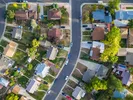By continuing to use this site, you agree to our use of cookies.
Ways to Determine Neighborhood Crime Rates Before You Move
Aug 1, 2018
Am I moving to a safe neighborhood?
Your family’s safety is a top priority, and knowing as much as possible about a neighborhood can help determine whether or not the new area is safe. Fortunately, a variety of online tools provide crime statistics by ZIP code and address. Take a look at some crime-tracking websites for data on your area, then learn about other ways you can help improve security and deter crime.

How to check neighborhood crime rates
Check out these free-to-use websites and/or apps for current data on what’s happening in your neighborhoods of interest:
Note: Data from crime-tracking websites are generally pulled from local police and law enforcement records. However, departments in some locations don’t release this information publicly, so you may have to contact them directly.
National Sex Offender Public Website
The National Sex Offender Public Website (NSOPW) is the only online tool (or app), that provides current data on sex offenders from all 50 states, the District of Columbia, the five principal U.S. territories and federally recognized Indian tribes. The resource is a partnership between the U.S. Department of Justice and state, territorial and tribal governments. The tool is used to find information on registered offenders who live, work and attend school in nearby locations.
Family Watchdog®
This online tool provides data on registered sex offenders. Enter the state, city, ZIP code or exact address into the search box, and a map will generate showing where each person lives. The pin drops are color-coded to signify the type of crime committed. The website also offers email and text notifications when offenders move in or out of an area.
CrimeReportsTM
CrimeReports is another online resource that provides information on local crime. Records are pulled from more than 1,000 law enforcement agencies nationwide, and the data is updated hourly, daily or weekly depending on the agency. Start by searching a specific address or browsing by state. Once the map generates, you can narrow the search to see trends of crimes that are reported on certain days and times. You can also draw a customized map, and sign up to receive notifications for that area when anything new is reported.
SpotCrime
Similar to the other tools, SpotCrime gives local statistics on various offenses. After searching a city, ZIP code or address, a map will appear showing where events are occurring and common trends. SpotCrime also offers a snapshot that compares an area’s crime report to previous months and shows whether instances have decreased or increased. You can also stay up-to-date with text message alerts anytime something is reported.
The Neighbors App
This app is an extension of the company RingTM, which sells home-security products. They created the Neighbors App as an additional security product that provides real-time crime information and safety alerts form neighbors, the Ring News team and local police departments. The app also lets you anonymously post a text, photo or video of suspicious activity to keep everyone in the neighborhood safe and aware.
Other ways to determine an area’s safety
Facts and figures don’t tell the whole story, so it’s a good idea to do some extra research. Get a bigger picture of a location’s safety by doing these things:
- Visit the area. Be on the lookout for things that indicate a location’s security. Look for things like children riding bikes, people walking their dogs or exercising, well-lit streets, security systems, etc.
- Talk with locals. Visit people next door or talk to residents at the local market or an event. Ask about the safety of roads, sidewalks and the community.
- Ask if there’s a Neighborhood Watch program. The National Sheriff’s Association sponsors the Neighborhood Watch program, which has roots from when night watchmen patrolled the streets. The official program was created in 1972 to help citizens organize, train and help protect their communities. See if your location has one, and if not, offer the idea of starting one.
- Keep up with local news. TV broadcasts, newspaper and city social media pages will cover local crime. Keep an eye out for mentions of the neighborhood.
Ways to make your neighborhood and home safer
Taking steps to increase your home’s security can help decrease an area’s overall crime rates. Here are some great ways to deter intruders:
- Install an alarm system. Studies prove that security systems prevent crime. The School of Criminal Justice at Rutgers University found that residential break-ins decreased in neighborhoods with a higher density of alarm systems. Most systems automatically alert police or firefighters in the event of an incident, which can result in faster response times.
- Set up outdoor security cameras. Outdoor cameras help discourage burglars from breaking into your home, vehicles, garages, sheds and from stealing packages off the porch. And if an incident does occur, there’s video proof.
- Improve the lighting. Dark neighborhoods are inviting to thieves. By installing lights (especially motion-sensor lights) around the exterior of your property, you can increase surveillance. The Campbell Collaboration found that crime decreased by 21 percent in areas with lighting improvements.
- Don’t leave valuables in plain sight. Don’t leave expensive items or valuables in a vehicle that’s parked in the driveway overnight. It’s also good to remember to hide or remove the garage-door opener from the vehicle so that intruders don’t have easy access to your home.
- Report suspicious behavior. Contact the local police station and report anything that’s unusual or seems suspicious.
Using crime statistics to make informed decisions
Knowing and understanding crime rates can help you make informed decisions about where to live. And by learning of potential issues, you can help prevent them. For more information concerning neighborhood crime information, contact your local police department or leave a comment below. We’re always here to help.
Check out our moving checklist to see other important tasks to complete before you move.
More articles you might like...



